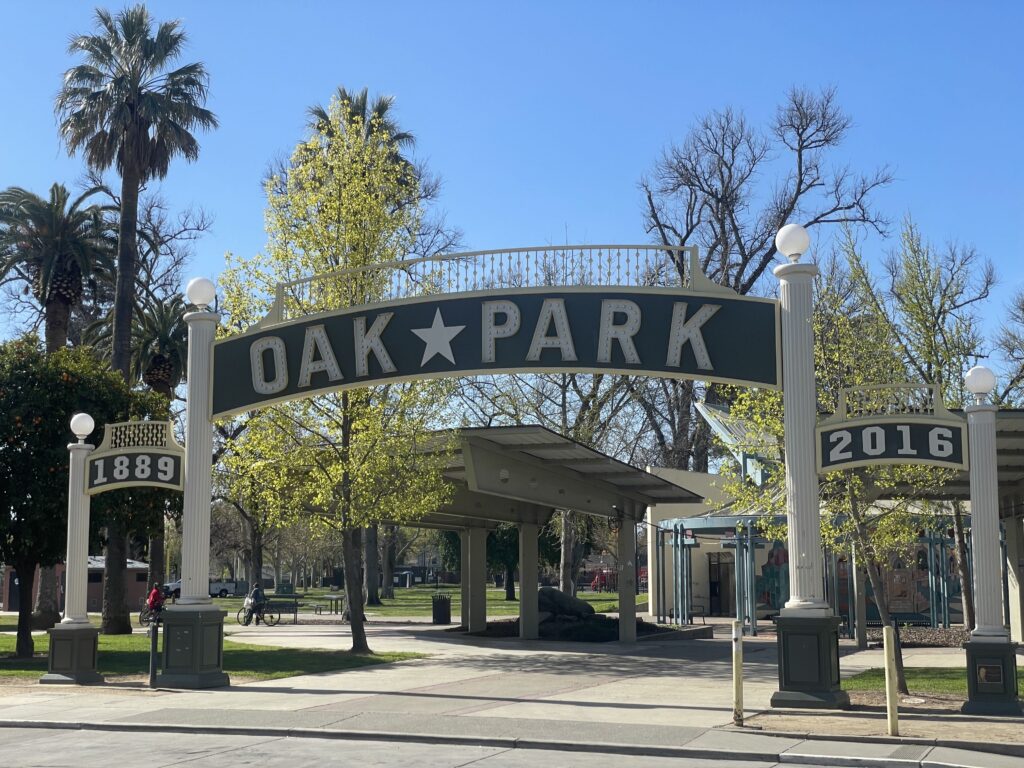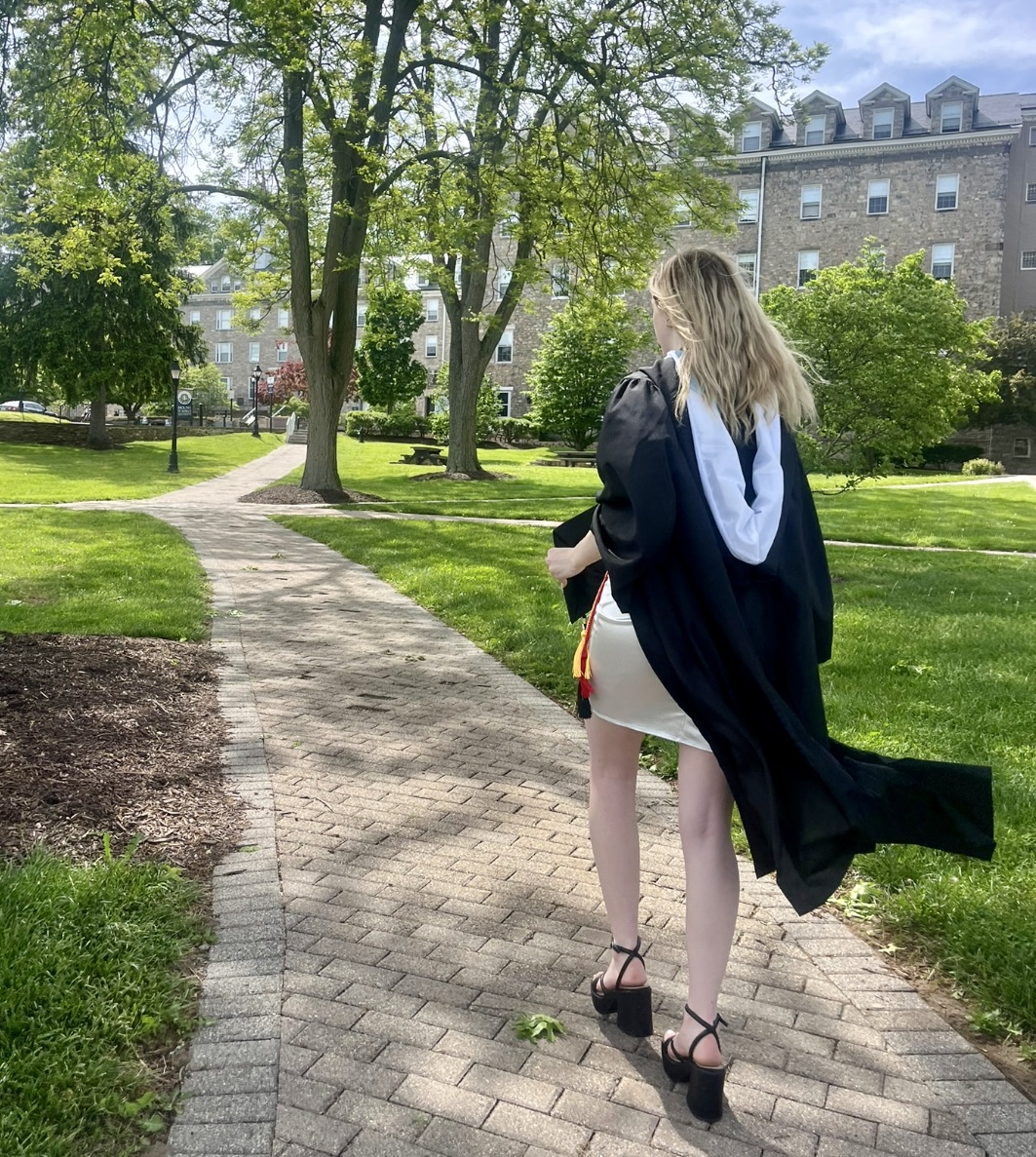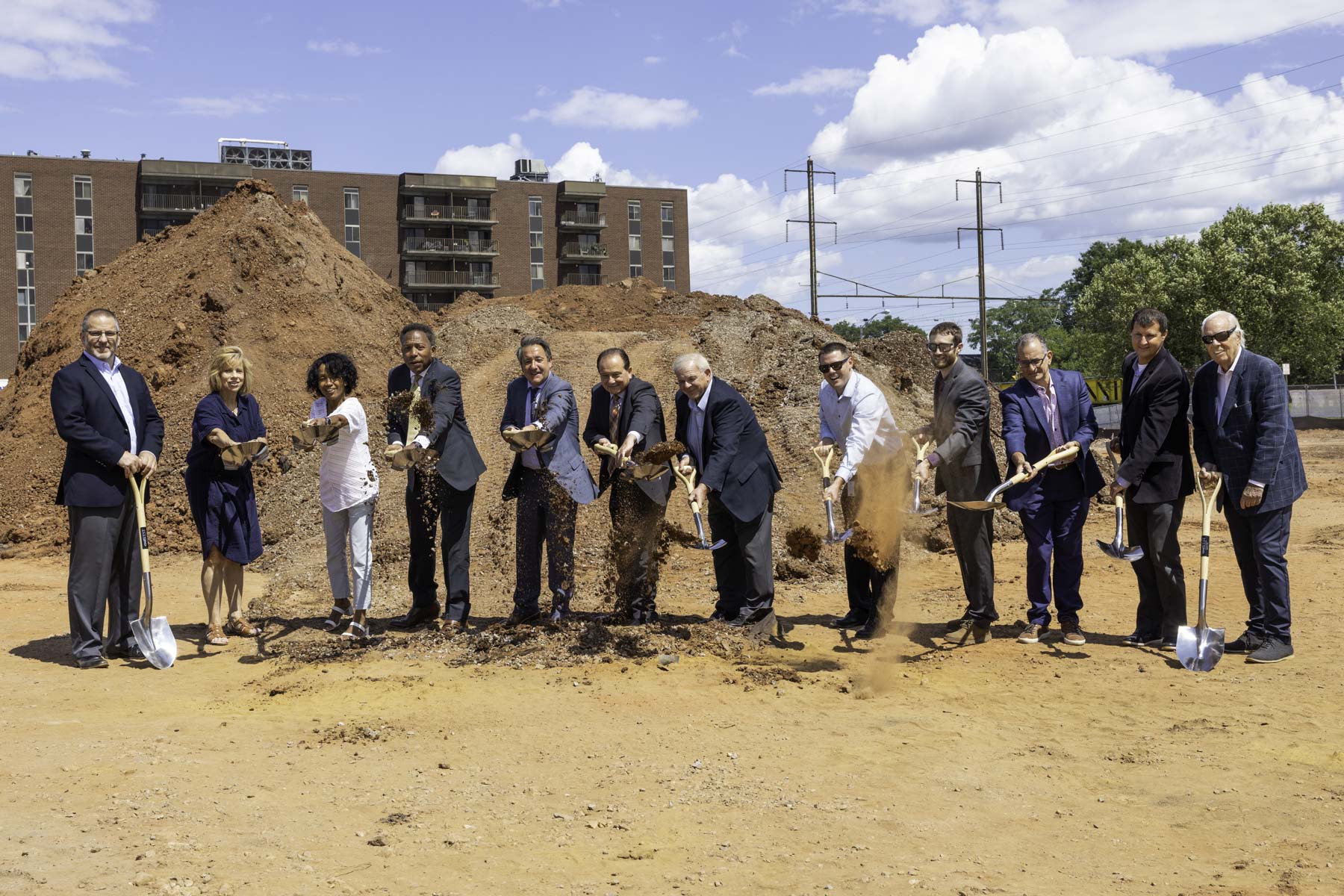(SACRAMENTO, Calif.) — The serene melody of wind chimes clash with the clatter of construction in what was once known as the Sacramento Food Bank Garden.
Located in Oak Park, a Sacramento neighborhood historically recognized as a thriving Black community bound by family-owned businesses and strong cultural ties, the garden’s removal is just one way the town is transforming due to modern redevelopment.
The garden was created nearly 10 years ago, when the Sacramento Food Bank expanded its campus in Oak Park, serving as a space to grow local produce and provide community services for residents. Once blooming with California poppies and sprawling with chard, artichoke, and tomatoes, the garden is now nothing but mounds of dirt and debris, a result of ongoing gentrification in Oak Park.
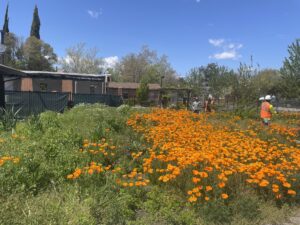
Construction began on the Sacramento Food Bank Garden earlier this year. [Credit: Cashea Airy]
The mounds of dirt belong to the University of the Pacific (UOP), which plans to build a health clinic for working medical students in place of the garden. The university bought these properties from the Sacramento Food Bank after it closed its Oak Park location last year.
Sumpter says UOP warned residents that they’d have only 10 days to preserve and repurpose what they could of the garden.
“The way they’re moving, I think we have 48 hours,” says Sumpter, the founder and former president of the Oak Park Neighborhood Association.
Across town, the University of California, Davis began construction last year on Aggie Square, a $1.1 billion project to develop more than 20 acres of land at the university’s medical center in Oak Park into research facilities, businesses, and other multi-purpose buildings for students, faculty, and professionals. Its namesake, Aggie, refers to the university’s nickname for its sports teams.
Some fear that the construction will displace residents, cause an increase in the cost of living, and harm the health of those living in Oak Park, despite developers’ promise that Aggie Square will provide jobs and opportunity for those who live there.
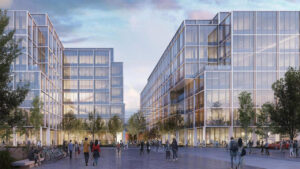
A mockup of redevelopment plans for the UC Davis Aggie Square Project in Oak Park. [Credit: ZGF Architects, Aggie Square, UC Davis ]
“Aggie Square has brought so much destruction [to the community],” she says.
A war of words: gentrification vs. revitalization
Tensions over whether Oak Park is experiencing damaging gentrification or helpful revitalization continue to shape many conversations about the neighborhood. Some see redevelopment efforts as a threat to Oak Park’s culture.
“Words matter. When you look at what revitalization means, [it] means that something had to be dead and [brought] back to life. My neighborhood was never dead,” says Michael Benjamin II, a community advocate, board member of the Oak Park Neighborhood Association, and District 5 director for the City of Sacramento.
“Colonialism and capitalism always find ways to justify bad behavior. So they come up with these words and concepts [but] how do you revitalize something that is still living? It’s insulting,” he says.
Benjamin grew up in Oak Park during the 1980s and remembers a tight-knit, predominantly Black community where everyone looked out for each other. He first noticed changes upon returning home from Howard University in 2003. While walking around his neighborhood, he saw a new development of condos that looked out of place. Shortly after, a Starbucks popped up in the community.
Today, Millennials and Gen Z-ers can be seen roaming around Oak Park, walking their dogs, or biking up and down Broadway. Modern apartments along this main street are protected with black gates and key-code entry.
“[Developers] decide they can afford a building and don’t have to answer any questions,” says Benjamin. “You can have development without displacement.”
Efforts toward positive change
Sacramento Investment without Displacement (SIWD), a coalition of community groups and advocates, is working with the City of Sacramento to draft a Community Benefits Agreement Ordinance to address the impact of Aggie Square and development efforts in Oak Park.
Kiara Reed, a representative of SIWD, says the group is at odds with the City of Sacramento as it hammers out details of the agreement with regard to public investment, minimum benefits to the neighborhood, and community voice and negotiation power.
The City of Sacramento Office of Media and Communications shared with The Click an update to the agreement approved in 2021. SIWD, however, continues to fight for further changes that will benefit the neighborhood.
While the struggle to preserve Oak Park continues, some community leaders have a more optimistic view of redevelopment.
“Revitalization is doing good in Oak Park,” says Cassandra Jennings, president of St. HOPE, a consortium of non-profit organizations aiming to “revitalize Oak Park through education and economic development.”
Founded in 1989 by Oak Park native Kevin Johnson, a former NBA player and mayor of Sacramento from 2008 to 2016, St. HOPE opened multiple businesses on Broadway as part of a larger redevelopment project in 2003. These include Underground Books, The Guild Theater, Old Soul Co. coffee shop, the barber shop World Class Faders, and the popular restaurant Fixins Soul Kitchen.
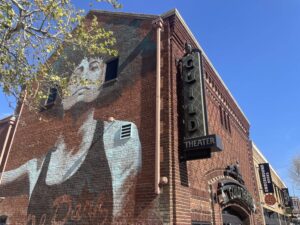
Mural alongside 40 Acres, a redeveloped area of Oak Park, Sacramento. The Guild Theater, Underground Books, and Old Soul Co. are some of the businesses that define the community. [Credit: Cashea Airy]
“[The] word gentrification is market-driven. I think when you look at redevelopment, it’s many of the tools, depending on the neighborhood, to lift it up. Anything that’s good, people want to latch onto,” says Jennings. “We want our people to feel that [Oak Park] is a place they can come, regardless of where they live, and feel culturally uplifted and grounded and respected.”
While the organization is aware of the development projects from UOP and UC Davis, it sees those as a chance for revitalization in Oak Park.
“The opportunity, rather than the challenge, is that we need to figure out how to get their resources to benefit the community,” says Jennings. “That’s where the opportunity is. It’s all of us in it together.”
Sacramento’s ever-changing suburb
The many changes to Oak Park have been evident throughout the years. The battle over Aggie Square is just the latest in a community that has seen its share of competing visions since its founding nearly 135 years ago.
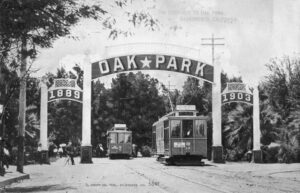
Oak Park, known as Sacramento’s first streetcar suburb, was founded in 1889. [Credit: Tom Myers via Teresa Simmons Arcadia Publishing – The Oak Park Chronicles Facebook]
People were drawn to Oak Park because it was a fairly new community, which reflected economic and industrial growth. In time, however, the Great Depression and World War II brought a decline in business and residence.
The construction of major highways, redlining, and white flight to suburban neighborhoods changed the demographics of Oak Park. Language written into restrictive race covenants banned homeowners from renting or selling to Black residents in other Sacramento communities, so, by the 1950s, Black people moved to Oak Park. As a result, it became a majority-Black neighborhood and a mecca for people to thrive in business, livelihood, and cultural expression.
The Black-owned newspaper, The Observer, was founded in Oak Park in 1962. The Black Panther Party opened its Sacramento office on 35th Street in 1968 and provided free breakfast and groceries to Oak Park families. Dunlaps’s Dining Room thrived as a neighborhood restaurant during this time, serving foods like fried chicken, T-bone steak, and baked ham.
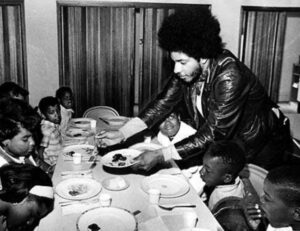
The Black Panther Party Free Breakfast Program provided children with meals for school children throughout the country. [Credit: The Black Detour, Twitter]
“The city was very negative on Oak Park way back then,” says Sumpter. “When we would call the city, 911… [they would say] ‘Well, what’s your address? Oh, you’re in Oak Park. What do you expect?’”
In more recent years, the Black community in Oak Park has become smaller as gentrification takes over and more white residents move into the neighborhood. According to a CapRadio review of the U.S. Census, published in 2022, “Oak Park’s Black population has dropped by 24% since 2010.”
Redevelopment is changing the landscape of the community. Mortgage and rental rates continue to increase. Job opportunities have caused new residents to move into the neighborhood, creating a more culturally diverse community that is evident in Oak Park today.
Oak Park looks forward
“We walk amongst each other, not with each other,” says Samuel Hill, of the demographic changes that gentrification has caused in the neighborhood. Hill, who works at Slim & Husky’s, a pizza restaurant on Broadway, was born and raised in the neighborhood and compares the feeling of the community to “oil and water,” noting a lack of true unity that was once a staple in Oak Park.
From railways to redlining, development to displacement, Oak Park continues to change. The impact of new development has altered the lives of everyone living in the community, though their individual perspectives on redevelopment vary.
“How do you put the brakes on a fast-moving train? I don’t know if we are ever going to get fairness, equity, [and] inclusivity out of this system,” says Benjamin. “I think that people have to continue to stand up and make demands. We have to continue to fight and organize.”
